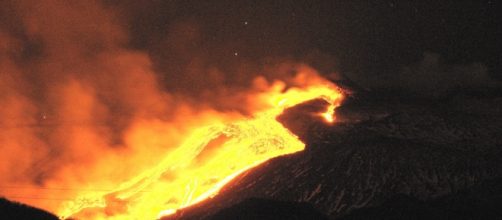NASA Scientists warned about the possible eruption of Earth’s super volcanos. Luckily, the agency may have also found a way to defuse the super volcanos and prevent them from causing catastrophic damages.
Super volcanos are the biggest threat to mankind
Many believe that the biggest threats to planet earth include nuclear war, another world war or a major asteroid impact. However, NASA emphasizes that the real threat is silently waiting to be awakened underneath the planet. According to Inquisitr, the possible eruption of any of the 20-known Supervolcanos is currently the biggest threat to life on Earth.
To date, NASA has identified 20 super volcanos scattered all over the planet. One of the most famous super volcanoes is the Yellowstone caldera which is located in Wyoming. According to Sputniknews, the eruption of Yellowstone caldera will incinerate everything within a 60-mile radius. The powerful explosion will also spew unimaginable quantities of volcanic dust into the atmosphere. The huge quantities of volcanic material will block out the Sun and the entire planet will fall into a volcanic winter.
The latest Yellowstone caldera eruption occurred 640,000 years ago. Records show that the deadly eruption ejected about 80,000 times the amount of volcanic particulates spewed out by Mount St. Helens in its 1980 eruption.
Ever since the inception of the earthquake swarm last June, a total of 2,357 tremors have occurred over the Yellowstone caldera to date. Thankfully, NASA clarified that the probability of a super volcanic eruption is unlikely. Nevertheless, the agency is looking for ways to prevent the occurrence of any disaster in the future.
NASA's plan to detonate supervolcanos
Recognizing that the threat from supervolcanos is real, NASA has devised a plan to defuse their explosive potential. According to NASA Jet Propulsion Laboratory aerospace engineer Dr. Brian Wilcox, the ultimate goal is to gradually reduce the power of supervolcanos and ultimately eliminate the risk of explosion.
The plan shall be executed by boring a hole near the magma chamber of a supervolcano. Heat shall then be siphoned from the dormant beast by pumping water into the borehole. The water is expected to absorb heat and resurface with a temperature of about 600 degrees Fahrenheit. This water shall then be used to generate electricity and power turbines. Once the water is cooled, it shall then be pumped back into the borehole and the process shall be repeated until all volcanic power is relieved. As feasible as the plan may seem, NASA emphasizes that further studies are still required. However, the agency hopes that this breakthrough will bring the public’s attention to the threat from supervolcanos.


